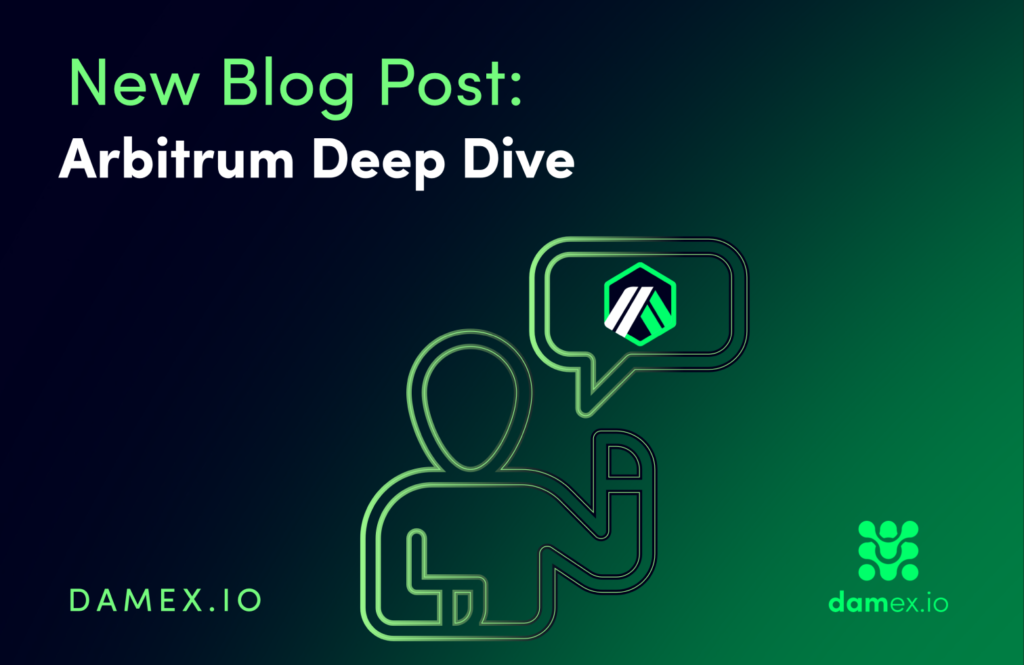Introduction
– Arbitrumis currently the most popular Layer 2 scaling solution for Ethereum, with approximately $2 billion of TVL and an extremely strong community.
– As we have discussed previously, Ethereum is looking increasingly likely to dominate the scaling race, and Arbitrum is currently leading the pack in the rollup-centric vision of future blockchain scalability.
– The ecosystem is developing rapidly with many dApps moving to Arbitrum, as well as some launching exclusively on Arbitrum for the first time.
– Despite this success, there is going to be competition ahead from alternatives like Polygon’s sidechain solution as well as several teams developing zk-rollups that are technically more sound than Arbitrum’s optimistic rollups. It’s all still to play for.
Offchain Labs, the team behind Arbitrum, was co-founded in 2018 by Ed Felton, a computer science and public affairs professor at Princeton. He served the Whitehouse as Deputy Chief Technology Officer and was a senior advisor to the president. Offchain Labs has already received investment from Coinbase Ventures, Pantera, Blocknation and others since its inception. Arbitrum One was launched in August 2021, with more than 400 teams already building on the chain at launch. Offchain Labs subsequently launched Arbitrum Nova a year later, which is a chain focused on gaming and social applications due to its ability to handle every high transaction volumes. Despite Arbitrum’s direct competitor Optimism launching a large airdrop of its native token $OP, Arbitrum has yet to launch$ARBI, despite vocal demand from the community. It may be that one of the reasons Arbitrum has seen so much activity in recent months is because of an expectation of large airdrop rewards for the most active wallets on-chain. Some drop-off inTVL and activity is to be expected after the airdrop occurs, but the base of what is being developed on Arbitrum is very solid.
dApps
Many dApps from mainnet have been moved to Arbitrum already alongside Arbitrum-native applications like GMX and Camelot DEX. Camelot has seen explosive growth recently, many metrics can be viewed on this excellent Dune Analytics dashboard. A narrative has grown for an “Arbitrum Season” similar to what happened to general DeFi applications on Layer 1’s in 2020. With many of Ethereum’s competing L1’s losing traction in the current bear market, this can be seen as a potential early sign that L2’s may be the centre of the next round of significant growth in the market. With several zk-rollups solutions on the horizon it will become a question of whether Optimism and Arbitrum can maintain the lead they have built by launching early, or whether the superiority of zero-knowledge tech will outweigh the difference in speed of getting to market. Polygon is launching their own zkEVM on March 27th which will be an early test of this thesis.
Applications are the Key
Many people have predicted a future where very few users interact with the Ethereum main chain and instead most transactions go through an L2 for lower costs and faster speed. If this vision is to occur, then all of the most used applications from mainnet will have to exist on the relevant L2’s(as well as native L2 dApps as Layer 2’s become the “default” way to build on Ethereum). The list below is the current top ten dApps by TVL on Arbitrum:
The most used mainnet applications are here, but perhaps surprisingly several Arbitrum-native dApps are dominating the TVL leaderboard. This is because mainnet is still where the bulk of usage is coming from for things like Uniswap and Curve and therefore a lot of value remains outside Arbitrum (and other rollups) at the present time. Meanwhile projects like Radiant and Camelot only exist on Arbitrum and don’t have to split TVL between different chains. If rollups eventually become the normal way to use Ethereum it should be expected that the core mainnet dApps TVL will gradually move over to L2’s. Arbitrum recently overtook Ethereum mainnet in daily transactions for the first time, something that seemed a distant goal even a year ago.
There is still time for Arbitrum to continue to push its lead without too many competitors for now but when zk-rollups start to launch, continued innovation will be required to stay on top. The tech of zero-knowledge solutions are superior to optimistic rollups, however they are more complex and harder to work with. This has delayed the launch of these L2’s and could slow development of their ecosystems post-launch. Arbitrum is positioning itself as the simpler solution that already works as a faster and cheaper version of mainnet Ethereum. If the community and dApp ecosystem remain strong it could be hard to displace. Key markers to look out for will be the launches of Starknet and zkSync and what traction they will be able to generate. It may be that the superior tech gains momentum over time and that optimistic rollups are surpassed. But for now Arbitrum is firmly in the lead and this is likely to continue at least until the airdrop, and probably well into the next bull run as well.



